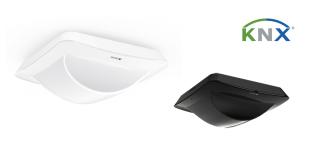
By Gwen Webber
KNX can help to transform buildings, shifting accessibility from a compliance checklist to essential infrastructure that delivers dignity and autonomy for all users.
In recent years, the imperative to create genuinely accessible environments has sharpened. People with visible disabilities and those with invisible impairments such as cognitive, sensory-processing or neurodivergent conditions are demanding systems for their homes and workplaces that offer independence, dignity and safety. And implementation of those systems couldn’t come soon enough.

Increased public awareness
Fortunately, the public is now more aware of consumer-orientated automation systems such as Nest in the UK, that have enabled home-makers to manage their heating on the way back from work, among other environmental controls. In fact, automation is increasingly seen as a vital part of creating inclusive spaces for public use too. On this subject, KNX has decades of experience as a globally-recognised open standard for building automation, however, its relevance can’t be overstated as inclusive design is now being woven into early design stages by architects and engineers.
Removing barriers
In one recent example, architecture giant and smart buildings champion, Foster+Partners, established an Inclusive Design Team. “Technology is transforming possibilities and enabling real‑time personalisation and support,” states Suzan Ucmaklioglu, Associate Partner | Inclusive Design Specialist at Foster+Partners, “adjustable lighting, smart wayfinding… can significantly improve people’s experiences.”

A greater appreciation in the design industry for the need to fold-in inclusive approaches and processes, not only as an additive, but as a strategy, has engendered a wider understanding of disability itself. As Jos Boys from DisOrdinary Architects explains in one interview, “People are only disabled when they are confronted with a barrier. If those barriers are removed, the disability ceases to exist.”

Indeed, automated control, voice and multimodal interfaces can enable more independent living. For individuals with limited dexterity or mobility, hands‑free operations to manage lighting, blinds, HVAC and appliances via voice assistants such as Alexa, Google and HomeKit integrated with KNX, become a lifeline. These reduce physical tasks and support consistency for those with memory or cognitive challenges. As outlined in the article ‘The KNX Assistive Living Family Home‘ by KNX UK, for wheelchair-users the ability to control the environment via app or voice without needing to change position is transformative.
More relevant still, is adaptive technology which is key to meeting the challenges presented by the climate crisis’ impact on the built environment. Here designers are looking for solutions to projects that focus on adaptive reuse and repurposing existing structures and interiors. The tactile, physical switches and customisable wall panels or mobile interfaces, designed with larger buttons or single-action toggles that KNX systems support, can be combined with voice control and touch. This multimodal control flexibility enhances the experience of different living and working conditions for people across cognitive, sensory and motor spectrums.

Inclusive solutions
On a recent site visit to an arts centre in Norwich to evaluate the building’s inclusivity and recommend improvements alongside a group of disabled artists, I became acutely aware of how important it is to assist architecture in creating calm, engaging and inviting environments. It is easy to take for granted comfortable and safe settings that enable unfettered engagement with the surroundings, or in this case, curated displays, however when it doesn’t work, it can point to poor design strategies. The quality of air, movement, visibility of signage, quality of light and lighting all directly and meaningfully impact the user’s experience, so a system that can be reactive or sensitive to these conditions should be a critical part of the strategy stage. Indeed, this goes further to highlight the value of such systems considerations for safety and well-being. KNX supports features such as motion-sensitive lighting, automated door locking at night, or alert triggers for smoke, carbon monoxide etc, that benefit people with impaired hearing or vision, or neurodivergent users needing environmental predictability.
Setting the benchmark
To shift the paradigm, an important step forward is to encourage quality and creative design that integrates systems such as KNX. In Casa Capace in Australia, for example, sophisticated assistive technology and aesthetics have been placed high on the priority list for this modular development, incubated by property investment company DPN. The scheme’s ambition has been to set the global benchmark for Specialist Disability Accommodation (SDA) with smart home automation specialists ABB helping to push the envelope for disability-led design in the region. Using KNX-controlled automated electric doors, adjustable bench heights, blinds and lighting scenes, these units offer flexibility over time and enhanced comfort and energy efficiency, cleverly removing the stigma from disabled design.

Conclusion
To truly achieve inclusive design, we must move beyond performative gestures and toward embedding accessibility into the DNA of architecture and building systems from the outset. As the examples in this article make clear, smart automation solutions using KNX are no longer optional add-ons, but essential infrastructure – delivering dignity, autonomy and safety for all users, regardless of ability. When inclusivity is treated not as a compliance checkbox, but as a creative design challenge, the results are both more humane and more innovative. The future of the built environment depends on this shift. Anything less is just clever design serving the wrong people.
Gwen Webber is a cultural strategist and writer with 20 years’ experience in architectural journalism, public programming and managing exhibitions on design and culture.











